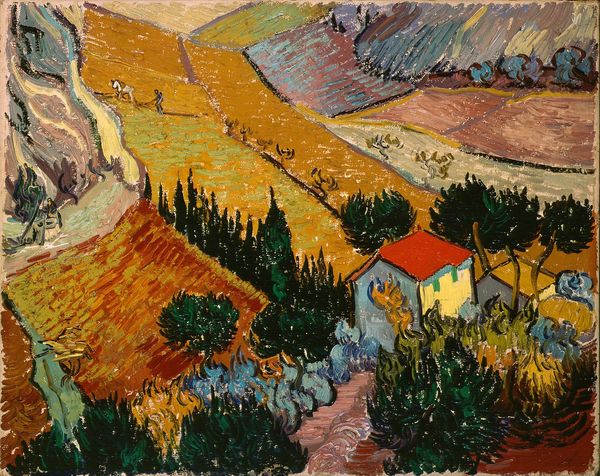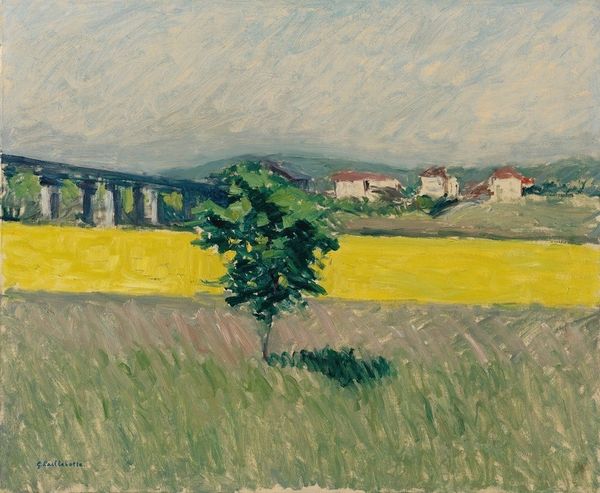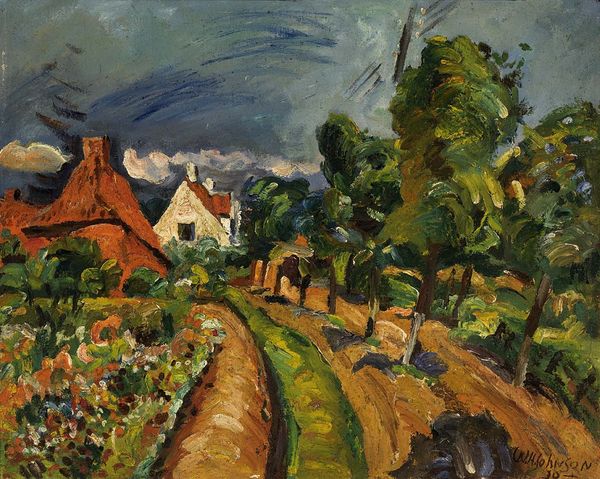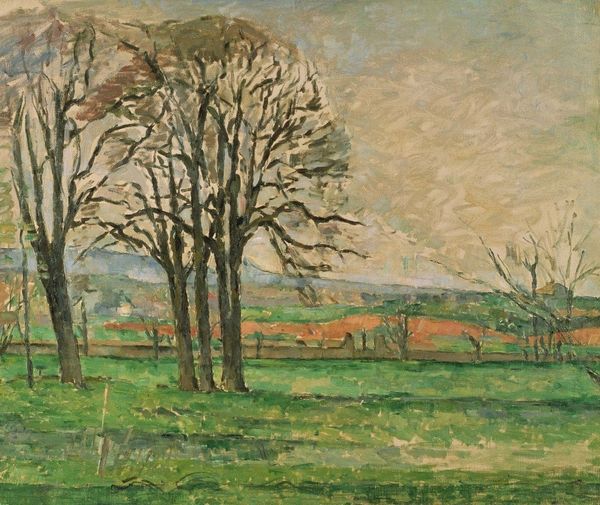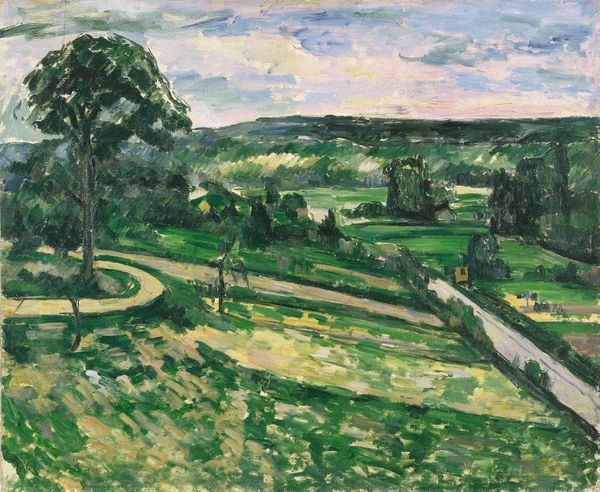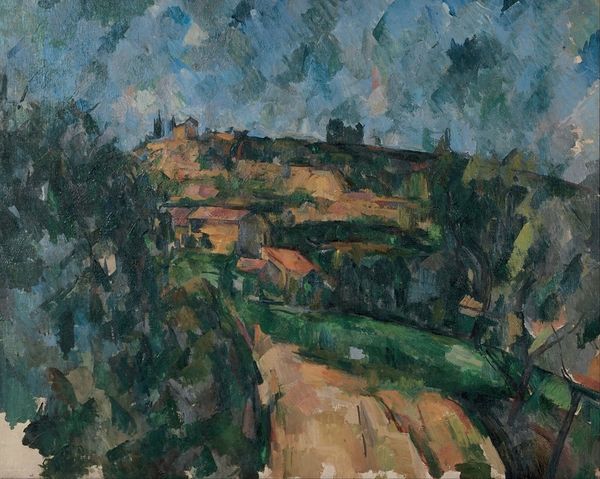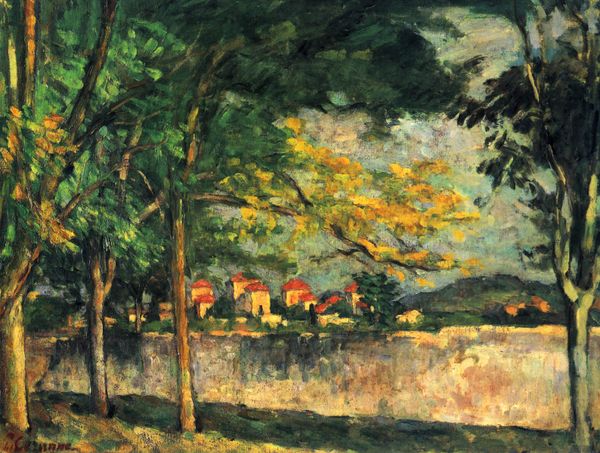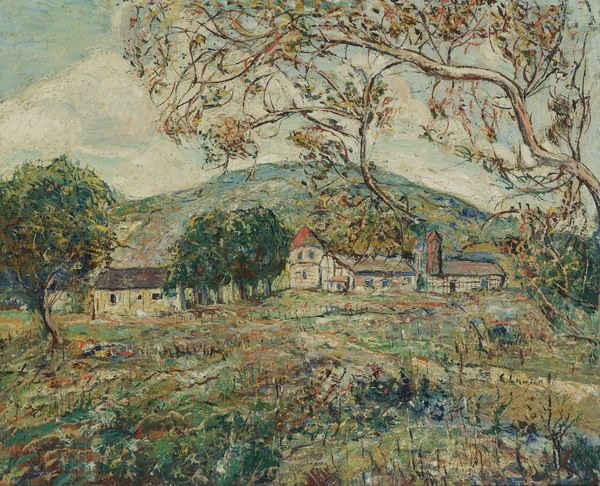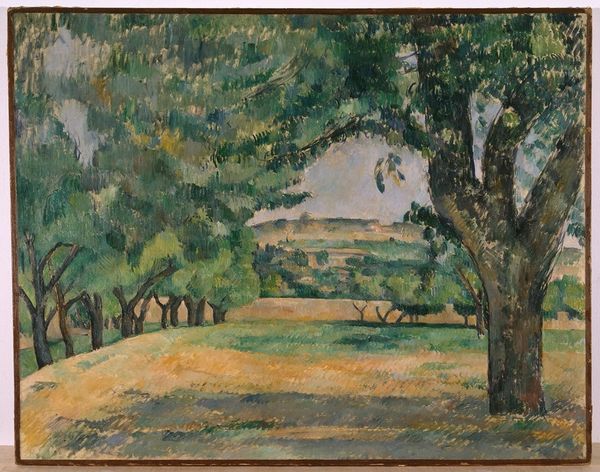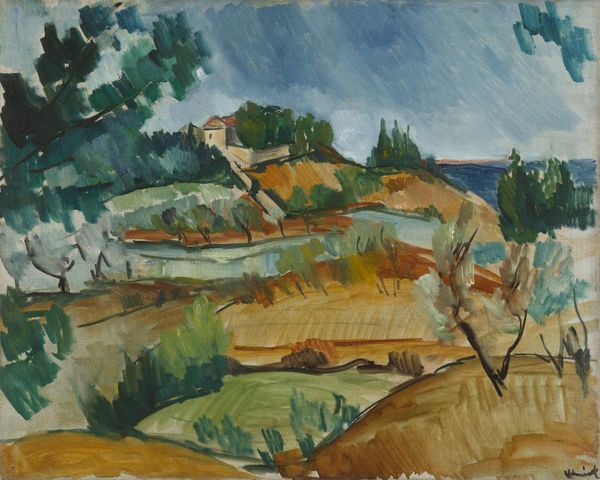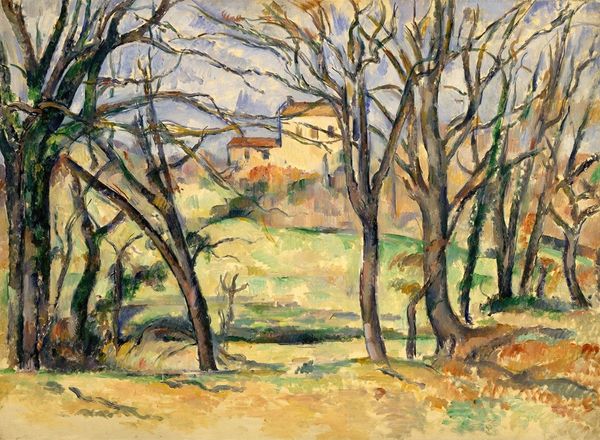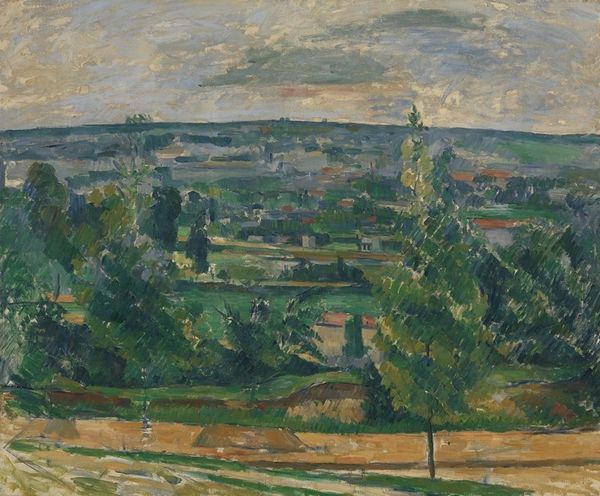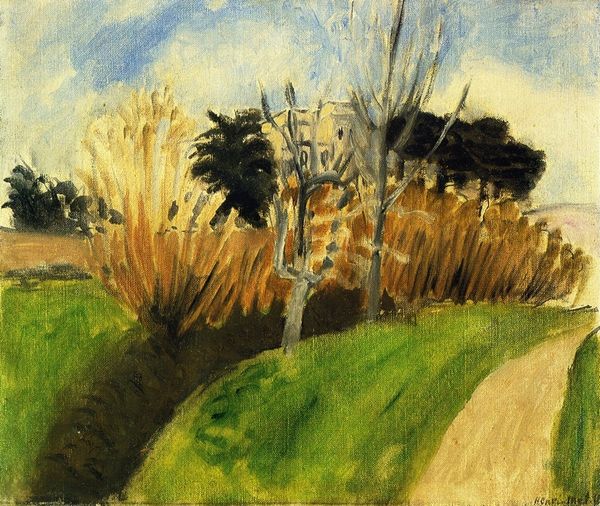
oil-paint
#
oil-paint
#
landscape
#
german-expressionism
#
oil painting
#
expressionism
#
expressionist
Dimensions: 48 x 40 cm
Copyright: Public domain
Editor: Here we have Walter Gramatté's 1915 oil painting, "Storm." It’s a pretty unsettling landscape; the colours are muted, and everything seems to be leaning precariously to one side. What symbols stand out to you? Curator: The bent trees, certainly. Notice how they are anthropomorphic, almost as if they’re struggling against an unseen force. Think about what a storm symbolizes: upheaval, change, but also cleansing and renewal. Is Gramatté commenting on the societal storms brewing during that pre-war period? Editor: That's an interesting angle. I was just seeing a literal storm, but considering it was painted in 1915, the year before the worst fighting of WWI began, it must reflect wider anxiety about impending change. Curator: Precisely. The house in the background, usually a symbol of stability and home, seems almost ghostly and distant. And that relentless wind... It speaks to a feeling of helplessness, of being at the mercy of forces beyond one’s control. Doesn’t the colour scheme remind you of decay and rot? Editor: Yes, it definitely enhances the feeling of unease. It makes me wonder if the painting is trying to say something about humanity's relationship with nature; maybe a fear of its power, its destructive force? Curator: It's very much rooted in the anxieties of the era. Artists then felt a very profound questioning of the existing social order. Editor: Thanks, that really gives me something to think about – art as a response to anxieties about much wider events! Curator: It reminds us that what might appear on the surface as a simple landscape can reveal hidden truths if we observe the symbolism present within.
Comments
No comments
Be the first to comment and join the conversation on the ultimate creative platform.
